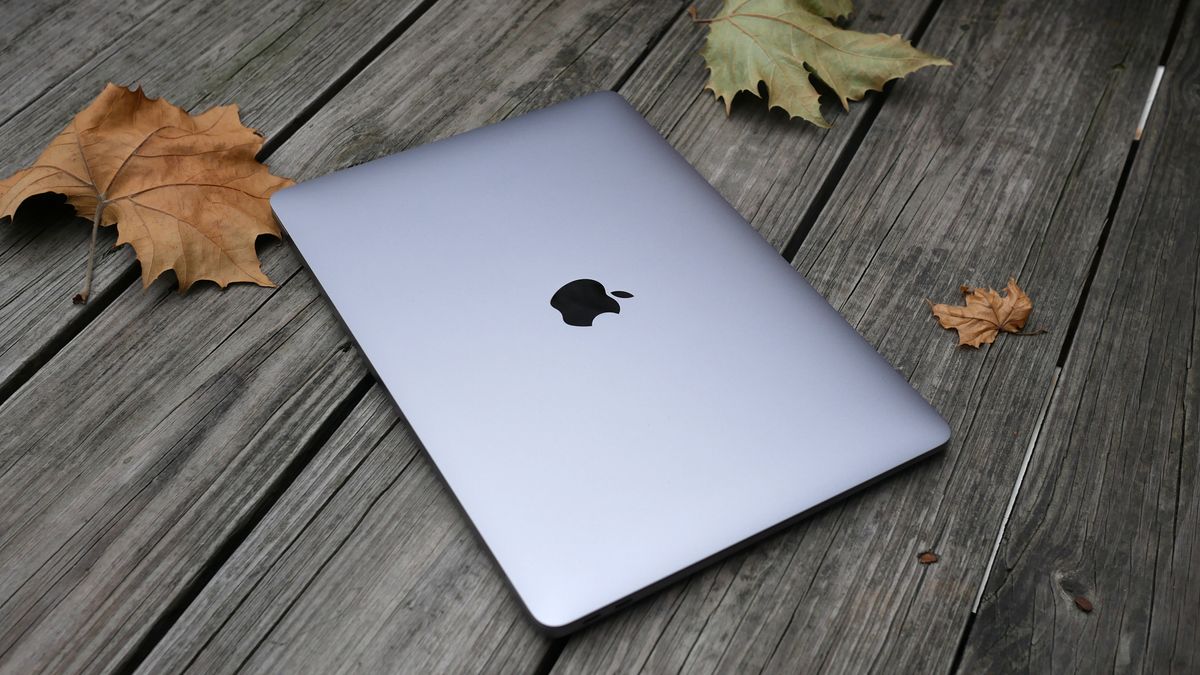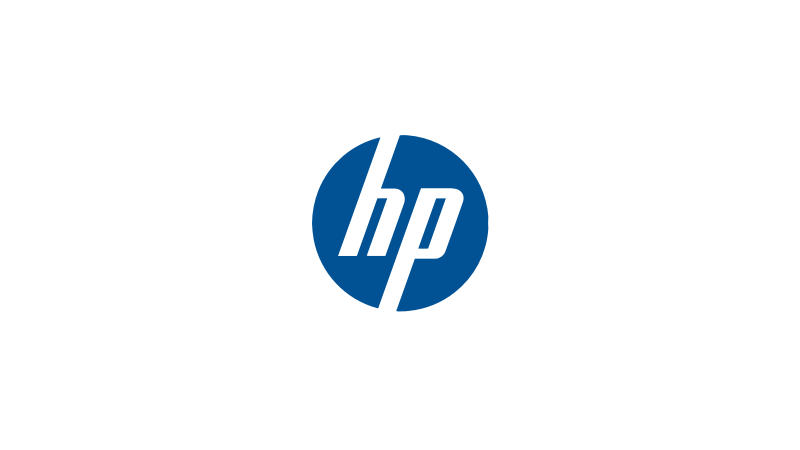Apple’s laptops are now comprised of a 13-inch MacBook Air and three flavors of MacBook Pro: 13 inches, 14 inches and 16 inches. It can be tough deciding which MacBook to buy, especially since Apple offers some models with M1 chips and others with M1 Pro or M1 Max processors.
That’s where our MacBook Air vs. MacBook Pro guide comes in. Between the MacBook Air, the 13-inch MacBook Pro, the 14-inch MacBook Pro and the 16-inch MacBook Pro, we’ll help you decide which laptop is worth your money by comparing price, features, performance, battery life and more. By the end of this guide, you should know exactly which laptop to spend your hard-earned money on — or whether you should wait for the next version to arrive.
If you want to get accustomed to life with a MacBook before buying one, check out our review of macOS Big Sur along with how to improve your Mac’s security and privacy. Not sure you want to go with a Mac? Consider giving our best laptops rankings a look to see all the other excellent options available in the market. Plus, there’s also the Mac mini with M1 as a commendable option.
Which MacBook is best?
It’s a fantastic time to be shopping for a MacBook now that Apple has completed its transition from Intel CPUs to custom Apple Silicon chips. Now the MacBook Air and all three MacBook Pro models come with M-series processors designed right in Cupertino.
So far, they deliver breathtaking performance and record-setting battery life. The M1 chip in the MacBook Air and 13-inch MacBook Pro brings unrivaled performance and endurance to these ultra-portable machines, making them the laptops to beat in their respective categories. Not to mention they support iOS and iPadOS apps, and in the case of the MacBook Air, don’t even need a fan to stay cool.
Then there is the new 14-inch MacBook Pro and 16-inch MacBook Pro, which come with either an M1 Pro an M1 Max chip. We got our hands on the M1 Pro chip and are blown away by its bonkers CPU and GPU performance, like 70% faster performance than the M1 and up to 2x faster GPU speeds. And that’s just for the M1 Pro, not the more powerful M1 Max.
MacBook Air vs. MacBook Pro: Specs compared
| Best for Most | Most Speed for $ | For power users | For power users who need a large screen | |
| MacBook Air | MacBook Pro 13 (Entry Level) | MacBook Pro 14-inch | MacBook Pro 16-inch | |
| Price | $999 | $1,299 | $1,999 (starting) | $2,499 |
| CPU | M1 | M1 | M1 Pro or M1 Max | M1 Pro or M1 Max |
| RAM | Up to 16GB | up to 16GB | Up to 64GB | up to 64GB |
| Display | 13.3 inches (2560 x 1600) | 13.3 inches (2560 x 1600) | 14.2 inches (3024 x 1964), 120Hz | 16.2 inches (3456 x 2234), 120Hz |
| Ports | 2 Thunderbolt 3, headphone | 2 Thunderbolt 3, headphone | 3 Thunderbolt 4, HDMI, SDXC card, headphone | 4 Thunderbolt 3, headphone |
| Graphics | M1 | M1 | M1 Pro or M1 Max | M1 Pro or M1 Max |
| Storage | up to 2TB | up to 2TB | Up to 8TB | up to 8TB |
| Battery Life (hrs) | 14:41 (tested) | 16:32 (tested) | 14:08 (tested) | 21 hours (rated) |
| Security | Touch ID | Touch ID | Touch ID | Touch ID |
| Size | 12 x 8.4 x 0.6 inches | 12 x 8.4 x 0.6 inches | 12.3 x 8.7 x 0.6 inches | 14 x 9.8 x 0.66 inches |
| Weight | 2.8 pounds | 3.1 pounds | 3.5 pounds | 4.7 pounds |
MacBook Air (M1, 2020): Best for most people
Pros: The new MacBook Air delivers almost everything you could want in an Apple laptop thanks to its M1 chip, which enables record-setting performance and battery life. Specifically, the MacBook Air lasted for 14 hours and 41 minutes on our battery test, making it one of the longest-lasting laptops around.
Our MacBook Air with 16GB of RAM scored a resounding 5,962 on the Geekbench 5.2 overall performance test, crushing the XPS 13 (5,319, Core i7-1165G7) with an 11th Gen (Tiger lake) Intel Core. The Surface Laptop 3 (4,791) with 10th Gen Intel chips dropped further behind, but still topped the category average (4,178).
And, of course, the MacBook Air has the Magic Keyboard, which is far more comfortable and reliable than the previous Butterfly keyboard. We compared these two keyboards side-by-side and unanimously voted in favor of the new version due to its bouncier keys and improved layout.
The screen is sharp, too, with a 2560 x 1600-pixel resolution. The latest version of the Air supports the P3 color range for punchier tones and True Tone, which adjusts the color temperature on the display based on ambient lighting conditions.
Another feature is Touch ID, which makes it easy to unlock the system, make secure payments, and replace passwords. The new MacBook Air’s 720p webcam also got a minor upgrade thanks to the M1 chip, and the system supports iOS and iPadOS apps now, although few are optimized for laptops.
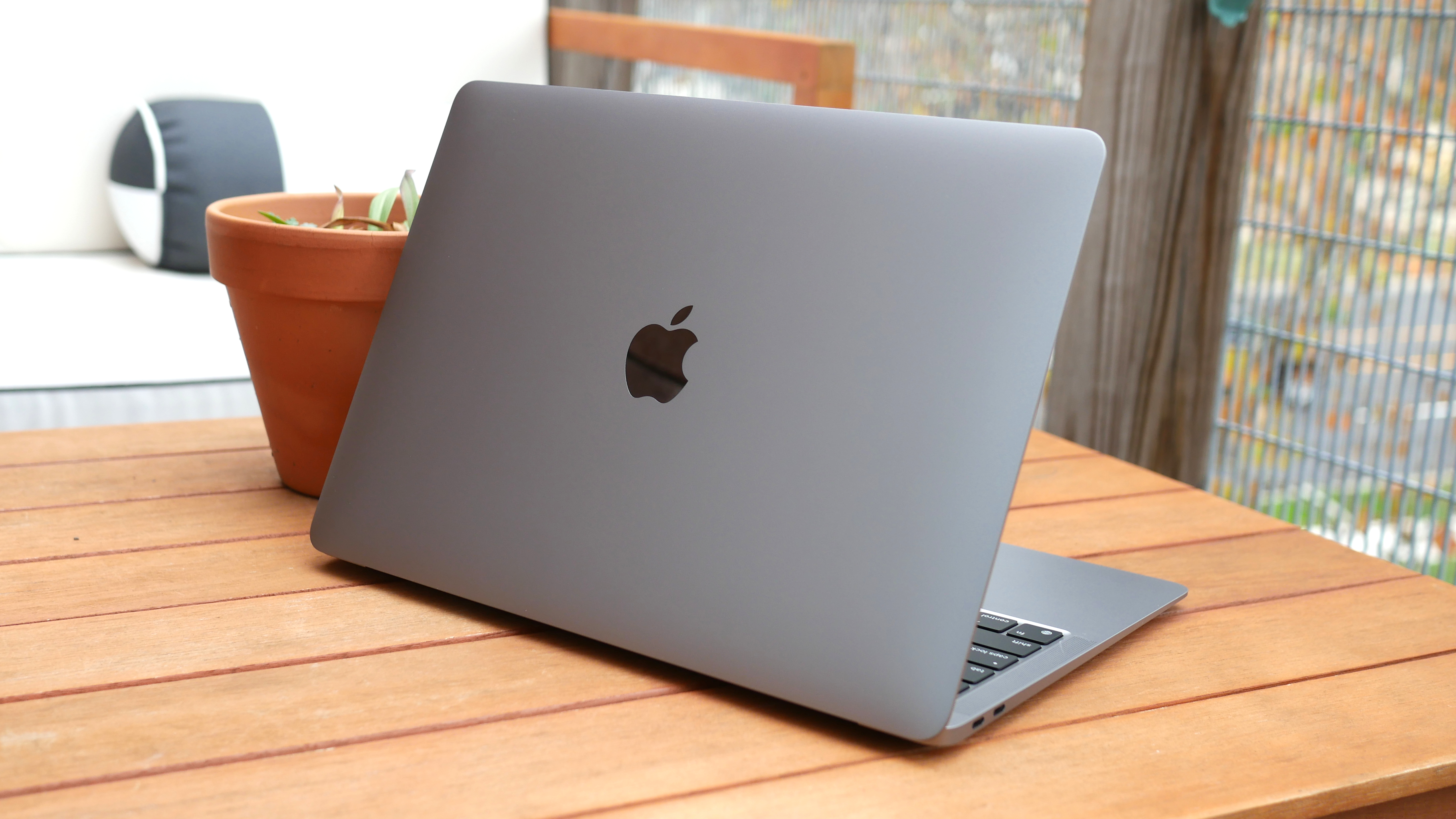
The MacBook Air, at 12 x 8.4 x 0.6 inches and 2.8 pounds, is larger than the Dell XPS 13 (11.6 x 7.8 x 0.6 inches, 2.8 pounds), but more compact than the 13.5-inch Microsoft Surface Laptop 3 (12.1 x 8.8 x 0.6 inches, 2.9 pounds).
Cons: Two USB-C ports aren’t enough for most people so be ready to use a dongle. Also, the MacBook Air isn’t the most compact or lightest 13-inch laptop, and the display bezels are too chunky for 2021. The laptop also lacks an IR camera (for facial recognition login)) and USB Type-A ports so those legacy devices will need an adapter.
See our full MacBook Air (M1, 2020) review
MacBook Pro (13-inch): Best for power users on a budget
Pros: The 13-inch MacBook Pro crams a lot of power into a slim and lightweight (3 pounds) chassis with its new M1 chip — and it even has a good keyboard. Yes, the 13-inch MacBook Pro gets the same M1 chip as the MacBook Air but this powerful machine can run demanding tasks for longer because it has a fan inside for keeping things cool.
Looking at the numbers, the MacBook Pro achieved 5,882 on the Geekbench 5 test, surpassing the 4,215 premium laptop average. The XPS 13 came the closest to matching the MacBook while the Asus ZenBook and HP Spectre x360 13 weren’t anywhere near as powerful.
This machine is only a bit heavier than the MacBook Air, but you get the same M1 processor and longer battery life. I want to emphasize that battery life: the MacBook Pro lasted for 16 hours and 32 minutes on our test. That’s just…well, ridiculous, and it puts the MacBook Pro in a different league than its competitors.
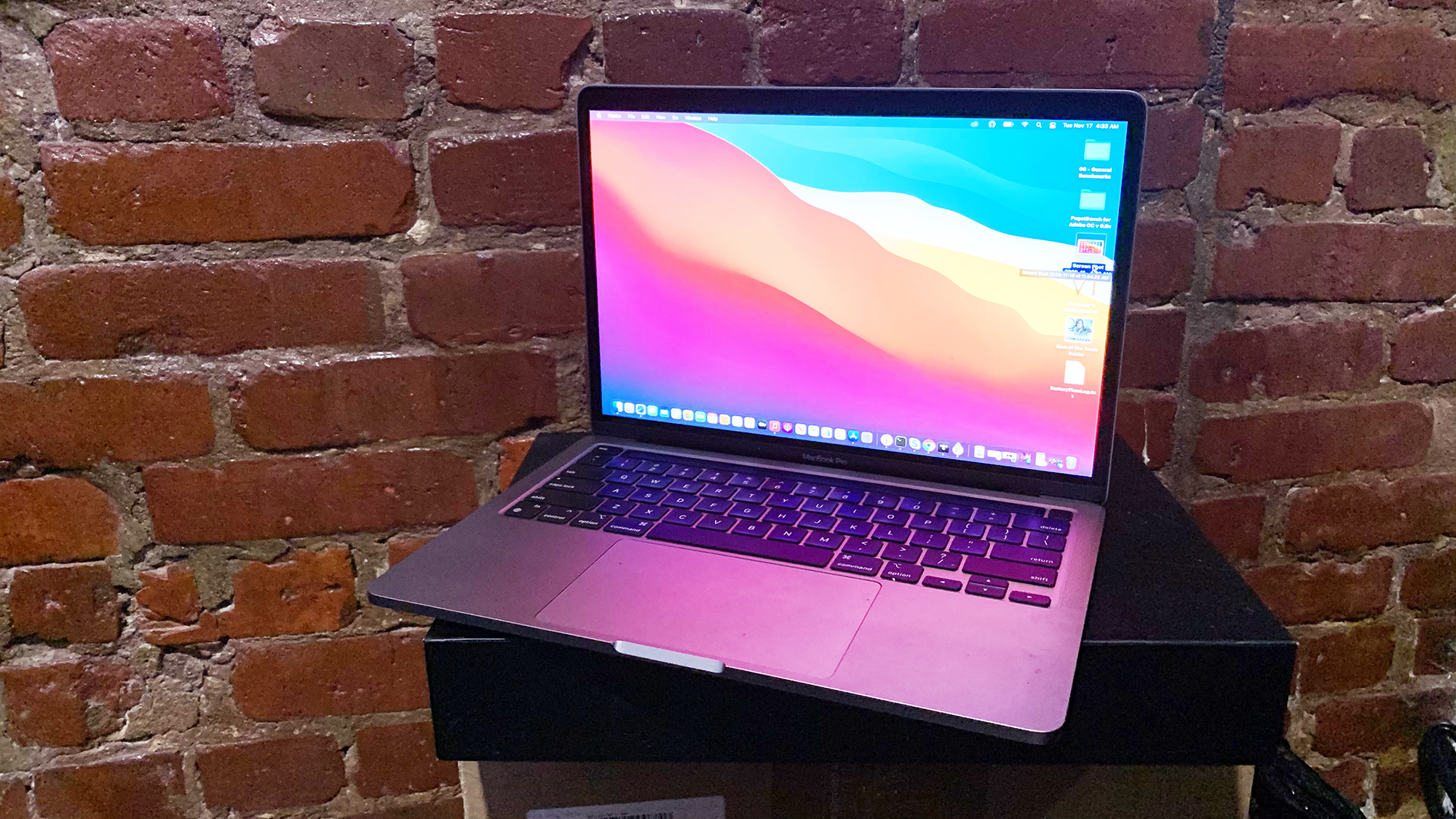
Apple brought the Touch Bar to the MacBook Pro, as well as a Touch ID sensor. The 13-inch MacBook Pro also offers an improved 720p webcam, a ridiculously fast SSD and a sleek design. What more can you ask for?
Cons: Unfortunately, the base model MacBook Pro has only two Thunderbolt 3 ports versus four ports on the pricier MacBook Pro 13-inch. Oh, and it’s time for Apple to get rid of those unsightly display bezels.
See our full 13-inch MacBook Pro (M1, 2020) review
MacBook Pro (14-inch): Best for creative pros needing portability
Pros: If you’re willing to spend $1,999, the 14-inch MacBook Pro is a practically perfect option, if not the best laptop, on the market. The M1 Pro and M1 Max processors Apple revealed promise to be the fastest, most power-efficient chips ever built for portable computing, and we can confirm the M1 Pro fits that description. The middle child in Apple’s proprietary line of chips, it has more than enough power to outperform some of the most powerful Intel and AMD-powered laptops. And with Apple’s commitment to both power and efficiency, the notebook powers through the most grueling tasks with barely a whisper from the fans.
The other performance specs are just as impressive, with the laptop supporting up to 32GB of RAM and an 8TB SSD. Battery life is tested at 14 hours and 8 minutes.
Moreover, this redesigned laptop comes with a 14.2-inch, 3024 x 1964-pixel Liquid Retina XDR mini-LED display with a 120Hz refresh rate. This panel is one of the brightest laptop screen ever (at 1,600 nits of peak luminance), and the most vivid outside of OLED panels.
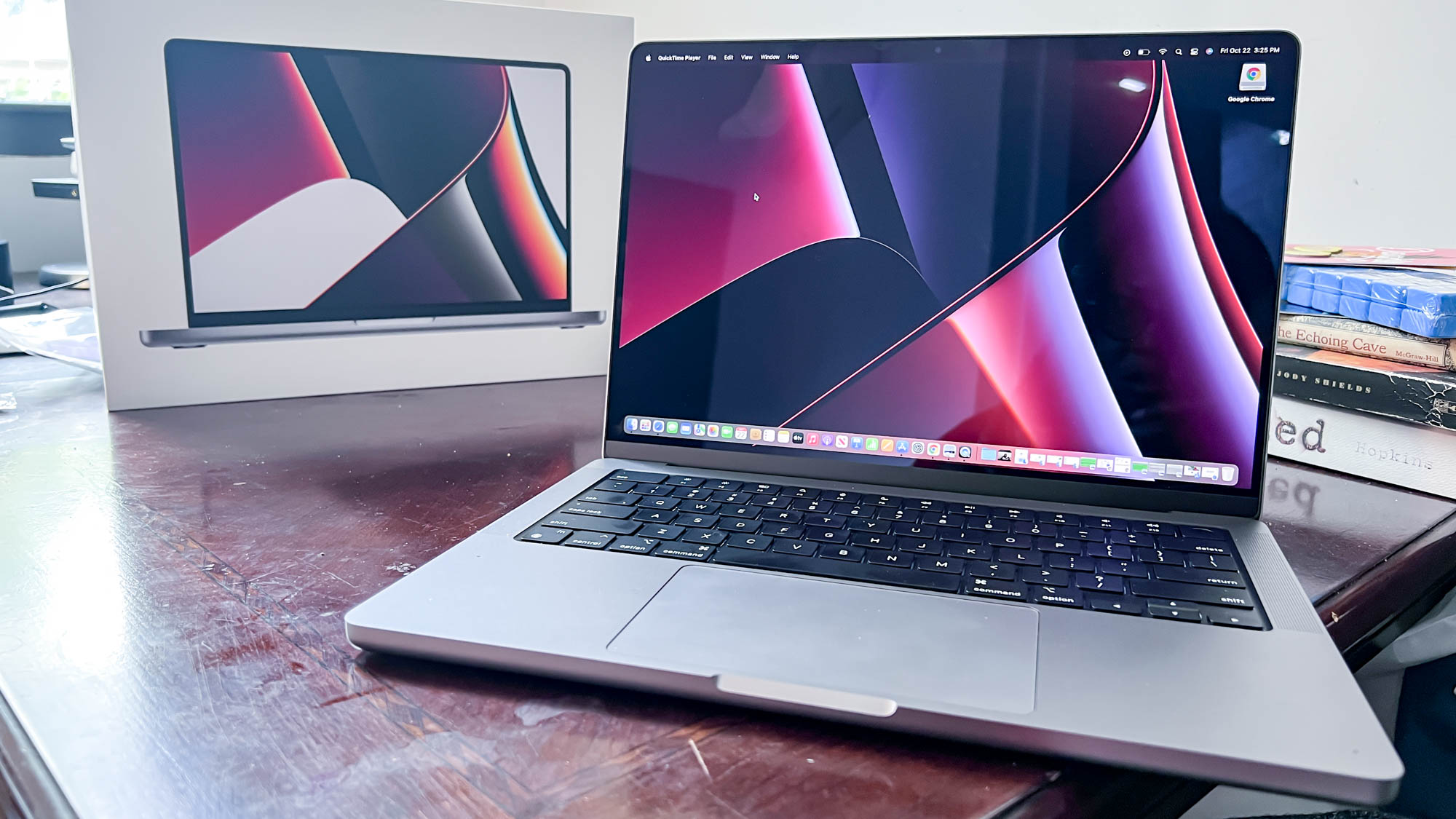
At 12.3 inches x 8.7 x 0.6 inches and 3.5 pounds, the 14-inch MacBook Pro remains portable despite the power it packs underneath the hood.
Some other nice features include a 1080p webcam, Touch ID, a six-speaker setup, and a keyboard without a Touch Bar.
Cons: So, what’s wrong with the laptop? Well, there is a notch. Yes, much like the iPhone 13, the MacBook Pro has a cutout at the top center of the display. It isn’t too distracting, though, because of how much larger the panel is. Also, there is no Face ID despite the size of that cutout. Another unquestionable con with the 14-inch MacBook Pro is its $1,999 starting price, and that’s without a USB-A port. Ouch.
See our full MacBook Pro 14 review
MacBook Pro 16-inch: Best for power users needing a large display
Pros: Everything we love about the 14-inch MacBook Pro but with a large 16-inch display. It has the same M1 Pro and M1 Max chips along with up to 64GB of memory and up to an 8TB SSD. Battery life on this model, however, is rated at an outstanding 21 hours (we’ll test that to be sure).
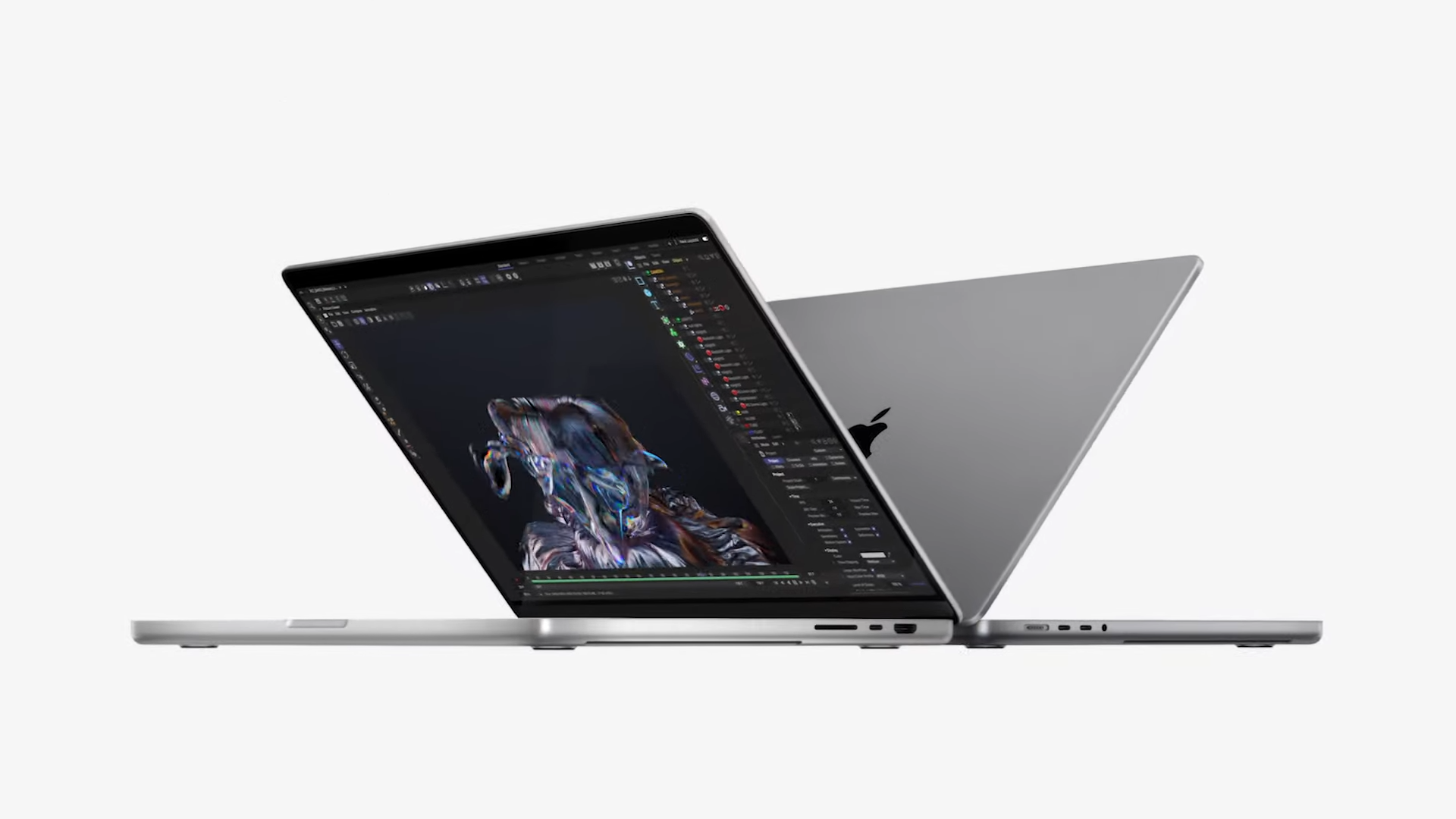
Cons: Same as the Pro: the 16-inch MacBook Pro is everything we love about the 14-inch version with a large screen. That means you can score the smaller model at a much lower price without sacrificing anything else besides display size. If you need the larger panel, then get this 16-inch MacBook Pro. If you don’t, then it’s probably won’t be worth the price trade-off.
Also at 14 x 9.8 x 0.66 inches and 4.7 pounds, the 16-inch MacBook Pro is considerably larger than the 14-inch model.
See our full MacBook Pro 16-inch preview
To find out more about how much longer Apple will keep your MacBook healthy, read our comprehensive Apple Warranty Check guide.
How we test MacBook laptops
We put MacBooks through extensive benchmark testing — both synthetic and real-world — before they end up in the hands of our reviewers. We evaluate everything from speed and battery life to display brightness, speaker volume and system heat.
We use a Klein K10 colorimeter to detect the brightness and sRGB color gamut of a laptop’s display. For performance benchmarking, we run the laptop through a gauntlet of benchmarks, including Geekbench 5.0 and 3DMark professional graphics tests.
To determine real-world performance, we task the laptop to convert a 4K video to 1080p resolution and to duplicate a 25GB multimedia file. Our real-world graphics test is the Dirt 3 benchmark with medium settings and 1080p resolution.
We also run heat tests by playing a 15-minute full-screen video and our battery test consists of continuous web surfing over Wi-Fi at 150 nits of brightness. We consider everything over the category average (8 hours and 36 minutes) to be a good result. Of course, these tests are complemented with hands-on testing from our reviewers.

